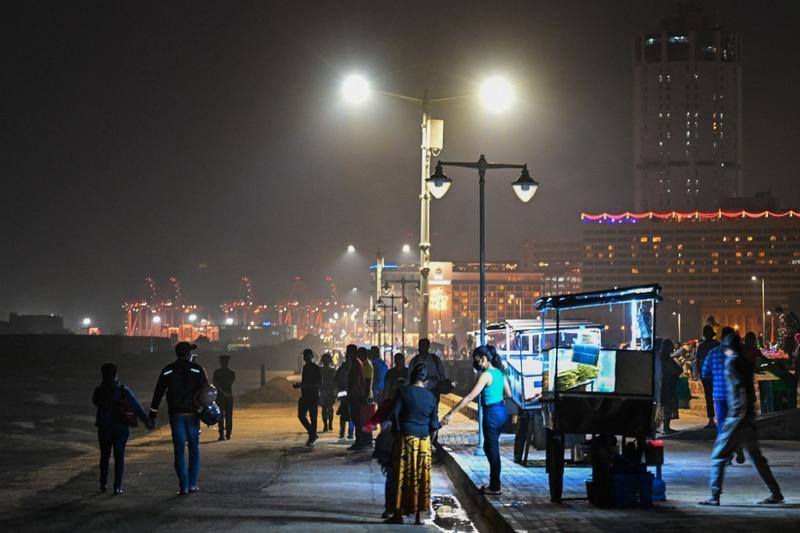 People walk along a promenade amid smoggy conditions in Colombo on Dec 9, 2022. (ISHARA S. KODIKARA / AFP)
People walk along a promenade amid smoggy conditions in Colombo on Dec 9, 2022. (ISHARA S. KODIKARA / AFP)
COLOMBO - Sri Lanka's economy shrank 11.8 percent in the July-September quarter from a year ago, government data showed on Thursday, the second-worst quarterly contraction ever for the country going through a severe financial crisis.
Economic mismanagement and the impact of the COVID-19 pandemic have left Sri Lanka short of dollars for essential imports including food, fuel, fertilizers and medicine.
The state-run Census and Statistics Department said that agriculture sector shrank 8.7 percent in the third quarter and industries 21.2 percent, while services dropped 2.6 percent, from a year earlier
The state-run Census and Statistics Department said that agriculture sector shrank 8.7 percent in the third quarter and industries 21.2 percent, while services dropped 2.6 percent, from a year earlier.
"This is the second-worst contraction Sri Lanka has experienced in a quarter after a 16.4 percent contraction in the second quarter of 2020," said Dimantha Mathew, head of research at First Capital.
"Our projection was that it would be much worse - possibly a contraction of about 20 percent but now overall contraction for the year could be about 9 percent."
Sri Lanka's central bank estimates the economy will contract by about 8 percent in 2022.
ALSO READ: Sri Lanka to show creditors debt restructuring, IMF bailout plans
The government said several factors including high inflation, power cuts, high interest rates, import shortages and fuel and fertilizer shortages impacted growth in the last quarter.
"A decrease in the demand of essential and non-essential goods and services due to the reduction of the real income of the people have directed the economy towards this decline," it said.
Economic hardships earlier this year had sparked widespread protests, which led former President Gotabaya Rajapaksa to flee the country and then resign as thousands of protesters occupied his office and official residence.
The economy had contracted 8.4 percent year-on-year in the second quarter, one of the worst performances in the island of 22 million people. It contracted 1.6 percent year-on-year in the first quarter.
President Ranil Wickremesinghe, elected by a parliamentary vote to replace Rajapaksa in July, has pledged to restore the economy but has warned tough reforms are needed.
READ MORE: Sri Lanka budget to seek recovery for crisis-hit economy
In September, Sri Lanka reached a staff-level agreement for a $2.9 billion bailout with the International Monetary Fund (IMF), but it has to restructure its debt with private bondholders and bilateral creditors before getting disbursements.
The island is expecting as much as $5 billion in loans next year from multilateral agencies besides the IMF deal, while the government is aiming to raise up to $3 billion via restructuring of state assets, Foreign Minister Ali Sabry told Reuters on Wednesday.


